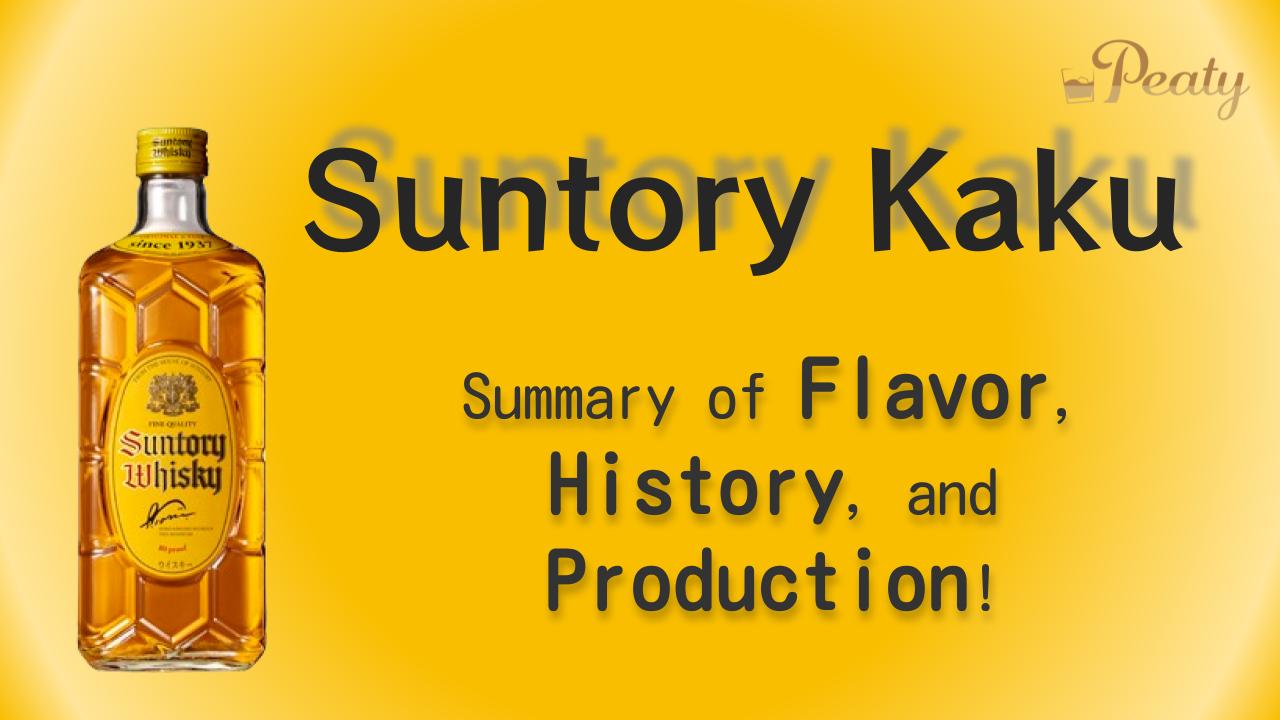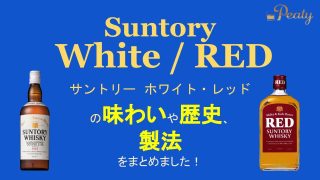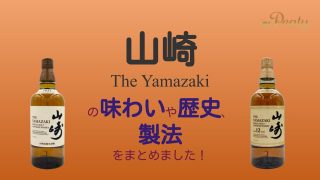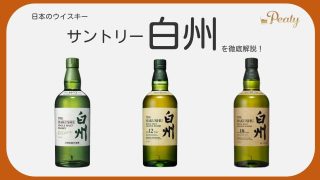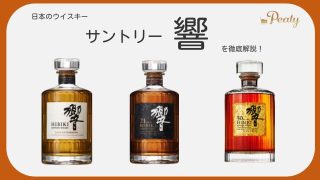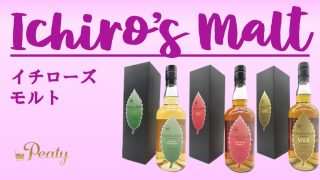Kaku (commonly known as “Kakubin”) is a blended whisky made in Japan. It is sold by Suntory and is made by blending whiskies from the Yamazaki and Hakushu distilleries.
The flavor profile of Kakubin includes a sweet aroma, a rich depth, and a dry finish.
Kakubin can almost always be found in convenience stores and supermarkets, making it one of the most well-known whiskies in Japan. In recent years, it has also gained popularity as the main ingredient in Kakubin Highball, a whisky highball drink.
Due to rising costs of raw materials and transportation, the price of Kakubin was revised in March 2023, leading to a price increase. Despite this, it remains a highly popular whisky in Japan.
Now, let’s dive deeper into the details of Kakubin. I will provide information for those who want to learn more about Kakubin or are considering whether to try or buy it!
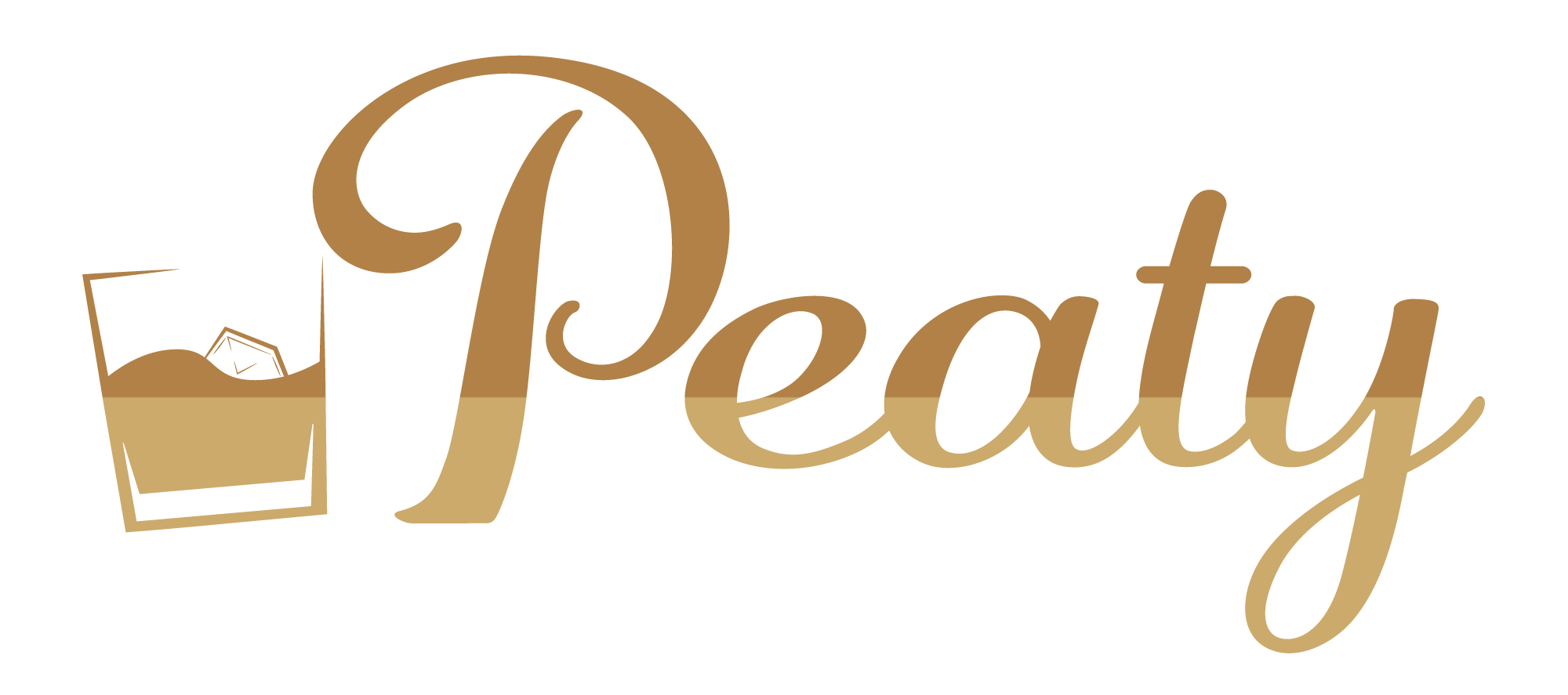
POINT
- Kakubin is a blended whisky sold by Suntory.
- There have been five types of Kakubin released in the past.
- Kakubin was first launched on October 8, 1937, during wartime, and gained popularity after being designated as a “Navy-approved product.”
- In 2008, the “Kakubin Highball” TV commercial campaign began, further boosting its popularity.
- Around 2022, Kakubin became a hit in South Korea, leading to shortages in Japan. Additionally, the price was revised in 2023, resulting in a price increase.
- Currently, Kakubin is made by blending malt whisky from the Yamazaki and Hakushu distilleries with grain whisky from other domestic distilleries, making it one of Japan’s most iconic blended whiskies.
角瓶の歴史
The History of Kakubin
Born as Suntory Whisky 12 Years
Kakubin is a whisky released by Suntory in 1937 and has been a long-selling product for over 80 years. Sales began on October 8, 1937, and at the time, it was known as “Suntory Whisky 12 Years.”
Shinjiro Torii, the founder of Suntory, started making whisky with the desire to “create a Japanese whisky that could rival Scotch.”
In 1929, Torii released a whisky brand called “Shirofuda” (Suntory White). (For more on Suntory White, see the following article.)
However, the strong smoky and peaty flavor did not suit the tastes of the Japanese people at the time, and it was often described as “smoke-smelling,” which led to poor reception.
In response, they decided to create a whisky that wasn’t smoky.
After much trial and error, they finally created “Suntory Whisky 12 Years,” a whisky designed to suit the Japanese palate.
This whisky, crafted to appeal to the Japanese taste, was warmly received by the public. At the time, due to the war, imports of foreign whisky were limited, and it quickly became a “Navy-approved product” for the Japanese Navy, further solidifying its popularity.

There is also a story from wartime where soldiers drank Kakubin whisky while abroad, only to realize after the war that it was a domestic brand.
During Japan’s period of rapid economic growth, Kakubin became associated with the image of success.
Several years after its release, in the 1950s, the name was changed to “Suntory Kakubin,” becoming the Kakubin we know today.
Until the release of “Suntory Old,” “Suntory Whisky (Kakubin)” was positioned as the top-tier whisky from Kotobukiya, establishing a solid brand image in the market.
From the beginning, Kakubin enjoyed strong sales and was regarded as the “dream whisky” for the common people. During Japan’s economic boom, the phrase “Kakubin for success” was coined, and the whisky gained immense popularity. At that time, people started drinking whisky with Torys, then moved on to Kakubin as they became more successful, and finally, those who achieved great success drank Old.
As a result, bar culture spread, with Torys Bars and Suntory Bars opening as chains, and Kakubin became a symbol of success. During this period, it boasted annual shipments of 500,000 cases.
However, by the 1980s, the market began to shrink as other alcoholic beverages like chuhai and wine gained popularity. Younger generations started favoring beer and happoshu, signaling the end of the era when whisky was synonymous with Western spirits. Despite this, Kakubin maintained a certain level of presence, enduring a long period of quiet persistence.
The Impact of Tax Reform and the Abolition of Whisky Grades on Kakubin
Starting in 1989, Kakubin’s brand image shifted, becoming more widespread among the general public.
In 1989, with the revision of the Liquor Tax Law, the ad valorem tax system and the grade system were abolished, leading to a sharp drop in the prices of alcoholic beverages. The retail price of Kakubin also dropped from 3,500 yen to 1,980 yen, making it more accessible to the public. At the same time, cheaper whisky for the mass market experienced price increases, causing confusion across the entire whisky market.
As a result of these tax law revisions, the annual shipment volume of Kakubin grew from 500,000 cases in the 1950s to approximately 3 million cases in the 1990s, a sixfold increase.
However, the abolition of the “grade system” meant that Kakubin lost the prestigious brand image it once had. It was no longer viewed as a whisky for those who had “made it,” losing support from connoisseurs who sought a sense of luxury.
Additionally, not only did the price change, but the blend composition of Kakubin was also significantly altered. In response to the Japanese public’s growing preference for lighter flavors, Suntory reduced the alcohol content of Kakubin from 43% to 40%. This change created a flavor profile that was both rich and clean, with a refreshing aftertaste.
Thus, Kakubin established itself as an easy-to-enjoy “table whisky,” shedding its former status as a symbol of success during Japan’s economic boom, but reviving itself as a popular and affordable brand for the masses.
Expansion of Kakubin’s Lineup
In the 1990s, Kakubin expanded its lineup beyond the standard offerings, attracting more fans.
In 1992, “Shiroi Kakubin” or “White Kakubin,” which used malt from the Hakushu Distillery, was introduced. Known for its dry and refreshing taste, White Kakubin was revamped in 2016 but was discontinued in March 2019.
Next, “Kuro Kakubin” was launched in 1999. Featuring a black-themed design, Kuro Kakubin had its alcohol content revised to 43% in 2007, highlighting its rich taste. However, it was discontinued in April 2016.
Finally, in 2013, the “New Premium <43°>” was released as a top-tier product. Despite its premium positioning, the strong image of Kakubin as a mass-market brand did not support its premium appeal, leading to its discontinuation in 2016 after a relatively short run.
The Kakubin Highball Trend
Around 2008, the introduction of advertising for “Kakubin Highball,” which involves mixing Kakubin with soda, sparked a significant boom, greatly increasing its shipment volume. This was the famous commercial featuring Koyuki(Japanese Actress) making highballs.

Thus, Kakubin, a whisky that has evolved over many years to embody Torii’s vision, has become one of the most famous whiskies in Japan.
Additionally, Kakubin has gained popularity in South Korea in recent years. The popularity of Japanese whisky in South Korea has been rising, with the total import volume of Japanese whisky reaching 897 tons in 2023, which is nine times the amount in 2018.
As of the first to third quarters of 2024, Kakubin has been exported at a rate of 396 tons, continuing to lead the popularity of Japanese whisky in South Korea this year.
Characteristics of Kakubin’s Production Method
Kakubin’s Raw Spirits
The raw spirits used in Kakubin come from bourbon barrels at the Yamazaki Distillery and Hakushu Distillery, which are owned by the whisky brand, as well as domestically produced grain whiskies.
The raw spirits are blended in a well-balanced manner to create an exquisite flavor profile.
Kakubin is a long-selling whisky that has been around for over 80 years. To maintain this traditional flavor, experienced blenders manage it daily.
At the time of its release, the Hakushu Distillery did not yet exist, so the raw spirits have evolved over time. Kakubin is a domestic blended whisky that continues to evolve every day.
Additionally, it is said that Kakubin is crafted to taste great when made into a highball. This could be why Kakubin Highball became such a popular trend.
Kakubin’s Bottle
The bottle of Kakubin is truly iconic.
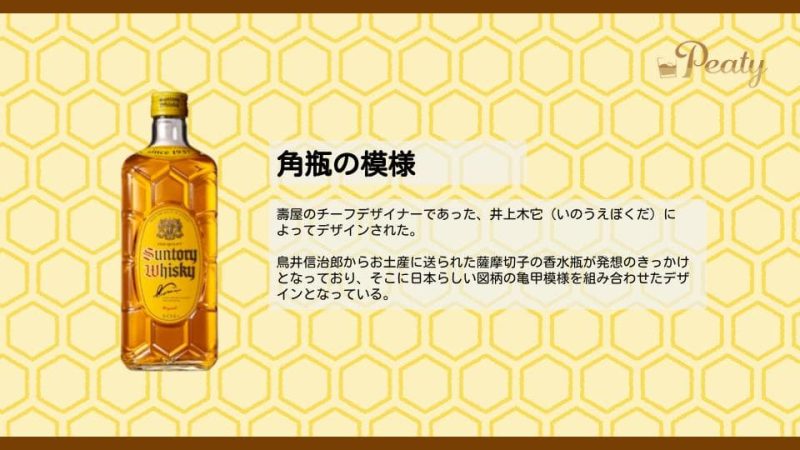
Its design, inspired by the traditional Japanese Satsuma Kiriko glasswork, features a hexagonal pattern, which adds a distinctly Japanese touch.
The design was created by Bokuda Inoue, the chief designer at Kotobukiya (now Suntory). The idea came to him after receiving a Satsuma Kiriko perfume bottle as a gift from Shinjiro Torii, and he combined the Japanese hexagonal pattern with it to create the design.
Originally, the whisky wasn’t called “Kakubin,” so the name wasn’t included on the bottle. Over time, people began calling it “Kakubin,” and the name stuck. Today, “Kakubin” is a registered trademark.
Now, not only the bottle but also the whisky itself has become a well-known brand, recognized globally as one of Japan’s representative blended whiskies.
How to Identify the Age of Kakubin Bottles
With its long history, it is said that you can determine the production year of Kakubin bottles. We will update this information as new details become available, but please refer to the following table for guidance!
| Year | Event | Label Features |
| October 8, 1937 | Launch of “Suntory Whisky 12 Years” | The name was listed as “Suntory Liquer Whisky,” and it included the company’s former name, Kotobukiya. |
| 1958 | The headquarters was relocated to Nakanoshima. | Company Name: Kotobukiya Label Address: “2-1, Nakanoshima, Kita-ku, Osaka” |
| 1963 | The company name changed to Suntory. | Company Name: Suntory Label Address: “2-1, Nakanoshima, Kita-ku, Osaka” |
| 1971 | The headquarters address was changed from “Nakanoshima” to “Dojima-hama Dori.” | Label Address: “2-2, Dojima-hama Dori, Kita-ku, Osaka” |
| 1979 | The address changed from “Dojima-hama Dori” to “Dojima-hama.” | The label address changed to “2-1-40, Dojima-hama, Kita-ku, Osaka.” |
| 1989 | The 特級(High Quality) Label Disappears | The “特級(High Quality)” label was removed from the neck label, and it now displays simply “Whisky.” The alcohol content was reduced from 43% to 40%. |
| Late 1990s | The address notation temporarily changed to “2-1-40, Dojima-hama.” | While the address on labels was listed as “2 Chome-1-40, Dojima-hama” until 1995 and from 2000 onwards, whiskeys with the address “2-1-40, Dojima-hama” started appearing around 1995. |
| Around 2006 | The “Special Quality” label disappears. | The front label previously stated “Special Quality,” but it was changed to “The finest old whisky.” |
Until 1989, the “Whisky Special Grade” label was written as follows on the neck label:

Flavor and Product List of Kakubin
Kakubin is characterized by its sweet aroma, deep richness, and dry drinking experience.
Currently, the official product list includes only the standard Kakubin bottle.
However, there have been several other versions released in the past, which I’ll introduce here. While it may be difficult to find them in supermarkets, if you come across them online or elsewhere, be sure to give them a try!
Kakubin

Kakubin is the standard version of Kakubin (non-age).
The initial experience is characterized by a sweet aroma, and when tasted, it has a rich, full-bodied flavor.
The recommended way to enjoy it is definitely as a highball.
With its mild flavor, Kakubin is delicious in any preparation, making it a great choice for beginners! Its light taste is also perfect as a food accompaniment!
Kakubin can also be purchased through hometown tax donations, so for those who love Kakubin, it might be a good idea to make a bulk purchase through this method.
Shirokaku
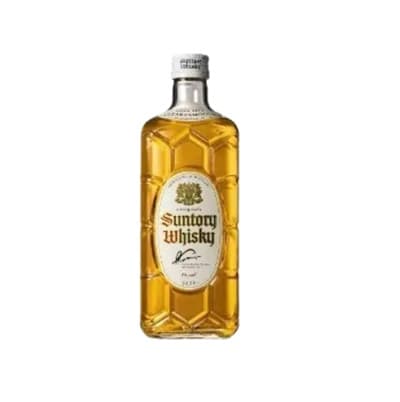
In the past, there was a variant called Shirokaku. Although it was discontinued in 2019, a limited-edition reissue became available starting August 9, 2022.
Released in 1992, Shirokaku is characterized by its white label and cap, distinguishing it from the standard Kakubin. For reference, the standard Kakubin is sometimes referred to as “Kiiro” (Yellow Kakubin) to differentiate it from Shirokaku.
Shirokaku offers a gentle aroma, clear drinking experience, and a crisp finish, providing a different flavor profile from the standard Kakubin.
As of June 2024, production has been halted, but it appears to be available for purchase online. Prices are around 5,000 to 8,000 yen, so if you’re interested, it’s best to get it soon!
Kurokaku 43°
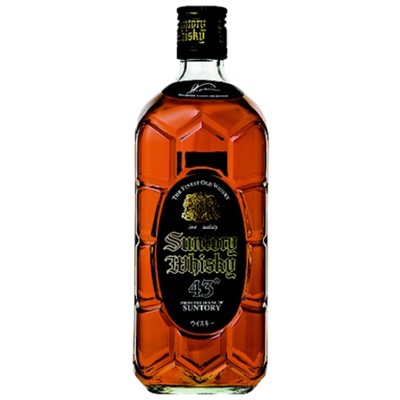
Kurokaku is also a discontinued product that is no longer available for sale.
Along with the standard Kakubin (Yellow), which I previously mentioned, and the Shirokaku, Kurokaku has its own distinct characteristics in terms of drinking experience and flavor.
Kurokaku offers a sweet aroma with notes of vanilla and malt. Compared to Kiiro and Shirokaku, it stands out for its richer taste, making it ideal for enjoying on the rocks.
It is recommended for those who want to savor a more intense whiskey slowly over time.
It may be scarce and difficult to find, but I’ve included a purchase link below just in case.
Premium Kakubin
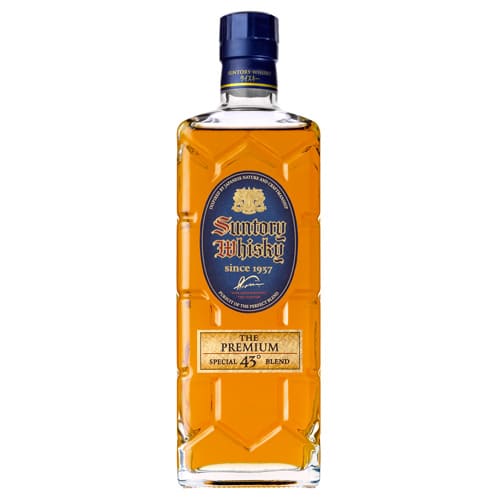
Premium Kakubin is, as the name suggests, a premium line of the standard Kakubin brand.
It was marketed with the concept of “a little luxury” for those special moments.
The aroma and flavor of Premium Kakubin are slightly stronger compared to the standard version, offering a sweeter fragrance and a longer finish.
It is recommended for those who want to enjoy a more luxurious experience compared to the standard Kakubin.
Currently, Premium Kakubin is not officially available for purchase, and online prices have soared to around 20,000 yen. If you come across it at a store or bar, it’s worth trying!
Kakubin Reissue
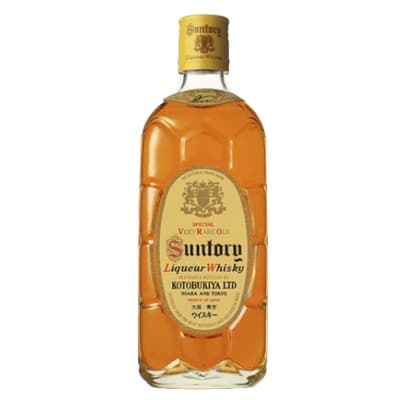
The Kakubin Reissue is a special edition released in February 2015.
Since its initial launch in 1937, Kakubin has gradually evolved to meet changing tastes and trends.
Now, more than 80 years after its debut, many people may want to revisit the original flavor.
For those interested, the Kakubin Reissue is a great choice. It has been blended to replicate the taste from the early days, offering a complex aroma and a robust full-bodied flavor. You can find this reissue online, so be sure to give it a try!
週末に買った角瓶の復刻版😎😎
— Peaty【ウイスキー情報サイト】 (@Peaty__Whisky) July 26, 2022
写真上げようとして気づきましたが、壁がちょうどハートマークに剥げてる(笑) pic.twitter.com/QYS0YBVAsa
Summary
Kakubin Highball is delicious, isn’t it? It’s quite convenient to find at izakayas that might not focus heavily on whiskey. I hope this overview has given you a better understanding of the various types of Kakubin available.
As of 2024, it’s becoming more common for supermarkets to limit purchases of Kakubin to “one bottle per person.” It might be worth considering buying some while it’s still readily available.
Be sure to check out other articles on Japanese whiskey as well!
